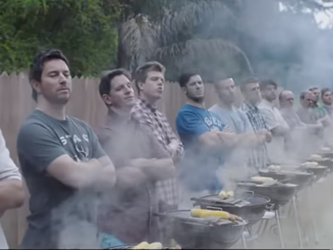He’s not the man he was
Male identity is hot right now, in and beyond the market research sector – from UK grime and hip hop artist Stormzy’s musings on male mental health, to comedian Robert Webb’s forthcoming book How Not to Be a Boy. At Crowd DNA, we’ve developed a close interest in masculinity through working with clients seeking to remain relevant to a young male audience – in an age when men aren’t the ‘lads’ they were a decade ago.
Of course, the debate about what makes a man isn’t new (remember the ‘new man’ and the ‘metrosexual’?), but it is especially visible today.
For Generation X-ers, often raised by feminists and moisturising since their teens, opining on male dilemmas still feels uncomfortable, frankly. We live in a patriarchy. Power is male; wealth is male; and the UK pay gap grants men a 9.4% bonus over women. Outmoded ideas of men as promiscuous risk-takers and women as meek and emotional remain ubiquitous. “My heart bleeds for you,” my mum would tell me.
Male identity has been changing among millennials. The drivers of this range from the (slow) advance of women in society to the mainstreaming of gay male identity. Male and female space has converged, from pubs to stag/hen dos. Health and body are greater male preoccupations than ever before.
Today we see a more fluid, individual masculinity that’s less binary or one-size-fits-all. In a YouGov survey in 2015, only 2% of men aged 18 to 24-years-old said they were ‘completely masculine’.
Men have become more intimate and emotional; ‘bromance’ is a word and US Presidents can cry now. When they do have children, men are more involved, embracing fatherhood and not trying to escape the fact.
Yet, for all this heartwarming progress at the leading edge, we’re seeing new tensions around masculinity. Most prominent is ‘toxic masculinity’, embodied by the – paradoxically, make-up-wearing – leader of the free world, Donald Trump. Behind him is a parade of back-to-the-kitchen growlers and alt-righters.
Worse still, millennial men are living with a misery epidemic. As the Campaign Against Living Miserably (CALM) reminds us, suicide is the biggest killer of young men – a subject that has been touchingly covered by UK rapper Professor Green. Being told that boys don’t cry – and appeals to ‘just be a man’ – aren’t helping.
There are lesser tensions, too. We see an increasing divergence between the generations over what it means to be a man, and a tendency among older males to misconstrue today’s men as victims of female success; ask the Baby Boomer icon Jeremy Clarkson how he feels about male identity today. We also see a continued grapple to pin down an aspirational male archetype for today. Strength and grit still dominate, as witnessed by the surge in Weekend Warriors and Tough Mudders (endurance-race participants).
Brands are increasingly reflecting changes. Unilever’s ‘Find Your Magic’ campaign for Lynx/Axe is a gold-standard case study for us, celebrating a more nuanced, diverse idea of masculinity – even more impressive as it comes from a brand once associated with a laddish posture that irritated women. Fashion brands have been relatively brave, too; Diesel’s ‘Make Love Not Walls’ campaign doesn’t hide whose proposed wall it’s talking about.
In drinks, Coors lets us laugh at Jean-Claude Van Damme’s faded machismo, while Southern Comfort liberates with a pot-bellied beach walker. Over in the Deep South, Jim Beam is now fronted by Mila Kunis; suddenly, Jack Daniel’s gruff men of Lynchburg Tennessee are looking a little unreconstructed.
There are many opportunities for brands to speak meaningfully to today’s young men. They can take a stand against toxic masculinity by talking to men and women as one camp – tapping into male goodwill for female progress. Nike’s ‘Unlimited You’ is a bracing male and female story. ‘Walking the talk’ as an organisation is also essential; American Apparel’s seedy casting of young submissive women won it few friends and bordered on the toxic. As Elina Vives, senior director of marketing at Coors, has said: “Any brand nowadays has to stop insulting women first and foremost, and be much more inclusive."
Brands can also work on the male happiness project: stoicism and old masculinity are a straitjacket and, frankly, young men need cheering up. Friendship is now a kinder, warmer experience than the ‘lad banter’ and locker room of old. It’s time, too, to banish the stock ‘doofus dad’, who is bemused by parenting and shopping. As Lynx/Axe’s shift showed, disrupting conventions of masculinity and bringing greater nuance to the man you portray can invigorate a brand and win over enemies.
Today’s male? He’s not the man he was – and a good thing, too.
Jake Goretzki is associate director at Crowd DNA

We hope you enjoyed this article.
Research Live is published by MRS.
The Market Research Society (MRS) exists to promote and protect the research sector, showcasing how research delivers impact for businesses and government.
Members of MRS enjoy many benefits including tailoured policy guidance, discounts on training and conferences, and access to member-only content.
For example, there's an archive of winning case studies from over a decade of MRS Awards.
Find out more about the benefits of joining MRS here.












1 Comment
Anon
8 years ago
Agree
Like Reply Report